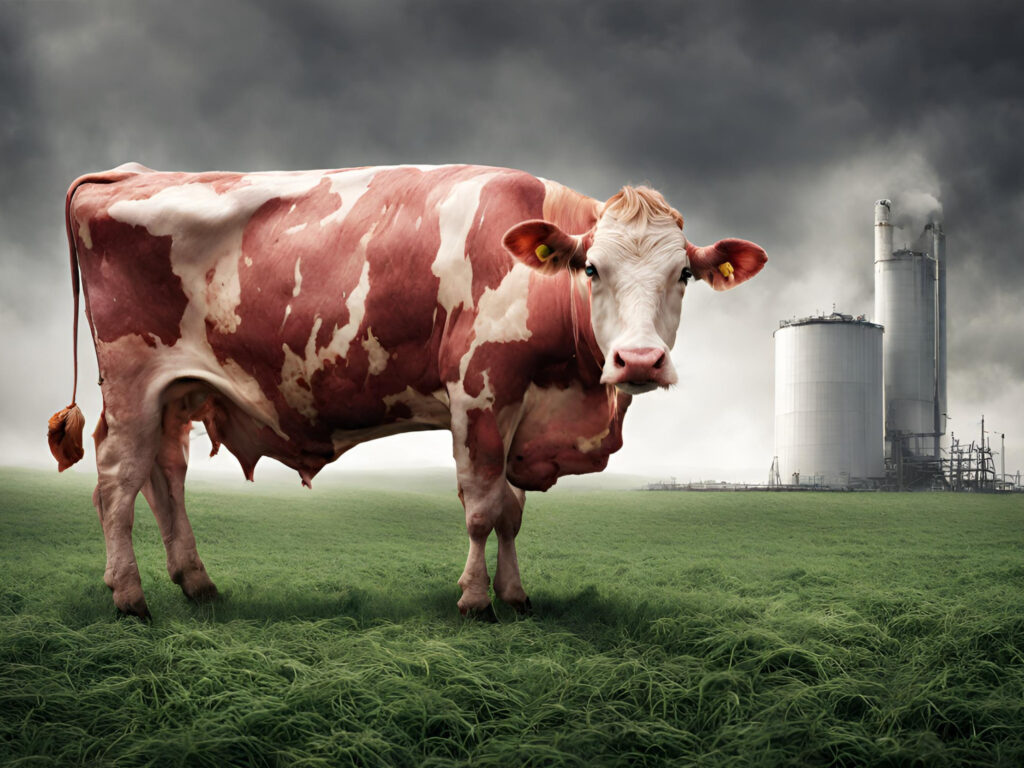
Global meat prices hit an all-time high in July, a top driver of rising food inflation. But with demand for animal protein expanding, greenhouse gas emissions will continue to rise too.
Meat continues to drive climate change and global food inflation, putting the future of food and nutrition security at risk.
According to figures released by the UN Food and Agriculture Organization, the global Meat Price Index reached 127.3 points in July, higher than it has ever been. This was a 1.2% jump from its previous peak in June, and was largely a result of growing demand from the US and China.
This, along with rising vegetable oil costs, was the main reason the Food Price Index – a global benchmark for food commodity prices – reached 130.1 points, its highest mark since February 2023.
One of the key reasons behind food inflation is climate change, which has disrupted yields and herd sizes, and is itself caused primarily by the burning of fossil fuels and livestock agriculture. With the demand for animal proteins set to grow over the next decade, both global emissions and food prices risk reaching untenable points.
US and China driving meat price hikes

The FAO noted that the rise in meat prices was primarily driven by higher beef and sheep meat costs. Beef, particularly, hit an all-time high on the price index, thanks to “strong import demand” from China and the US, which outpaced the available export supplies.
China imported record numbers of beef in 2024 as its popularity soared, but an official probe into foreign-produced beef has put demand in jeopardy.
The US, meanwhile, saw imports rise after drought caused sharp declines in the domestic cattle herd and subsequent supply intensity. Cattle numbers have fallen to their lowest level in 70 years, and high grain prices and rising interest rates have made beef production an expensive activity.
President Donald Trump’s tariffs are expected to lower imports of beef this year, according to the US Department of Agriculture, which forecasts a further 6.6% increase in prices from the current record highs.
Meanwhile, rising global demand has also led to an uptick in beef prices in Brazil, the second-largest beef producer (after the US, and just ahead of China). Brazil’s chicken also regained flu-free status after containing a farm-level avian influenza outbreak. This led to a rise in imports of Brazilian meat, pushing up poultry prices globally.
In the UK, chicken prices have nearly doubled over the last two years, thanks to avian flu and low stock intensity. And in July, wholesale prices of meat in the country were impacted by tightening global supplies, contributing to a 4% year-on-year rise in overall food inflation.
As meat production rises, so will emissions and prices

The FAO’s latest index comes shortly after the agency released an agricultural outlook for the next decade in collaboration with the Organisation for Economic Cooperation and Development (OECD).
The report revealed that global per capita consumption of meat, dairy and seafood is set to increase by 6% from now to 2034, driven largely by higher intake in lower-middle-income countries (projected to rise by 24%). In fact, agriculture and fish production is expected to expand by 14% over the next decade, and meat, dairy and egg output even further by 17%. Total livestock inventories, meanwhile, are forecast to increase by 7%.
So the growing demand will be met with upticks in supply – but as the current trend shows, it will also likely mean a higher price for meat consumers. This is because rising meat production will lead to a greater environmental cost.
Livestock farming accounts for up to a fifth of global emissions, with beef by far the biggest culprit. Meat and dairy production make up nearly 60% of the food system’s emissions, while taking up 80% of farmland and a majority of the freshwater supply. According to one study, animal agriculture is the leading cause of climate change.
The FAO itself pointed out that the gains in livestock production come at a steep environmental cost. Direct GHG emissions from agriculture are set to rise by 6% over the next decade, despite improvements in emissions intensity. “As production becomes more efficient, the emissions generated per unit of output will decline, but the overall footprint will still grow unless additional measures are taken,” the agency warned.
“Seasonal shocks, such as droughts and floods, can reduce feed grain harvests or water supplies, driving up production costs and constraining meat output. Increasing weather fluctuations will also affect on-farm productivity,” the report stated.
The changes in climate caused by meat production come back to bite the industry, causing extreme weather events like the droughts that have plagued the US cattle sector. As producers look to rebuild their herd numbers, volatile weather will make the already years-long task harder.
Environmentalists have long called for a carbon tax on meat production, and Denmark has led the way here, with a levy on meat and dairy set to begin in 2030. But even without a meat tax, prices of animal proteins are at all-time highs, and without climate action and a shift towards more sustainable protein sources, they will continue to skyrocket.
The post Global Meat Prices Reach All-Time High, Driving Food Inflation & Climate Crisis appeared first on Green Queen.
This post was originally published on Green Queen.